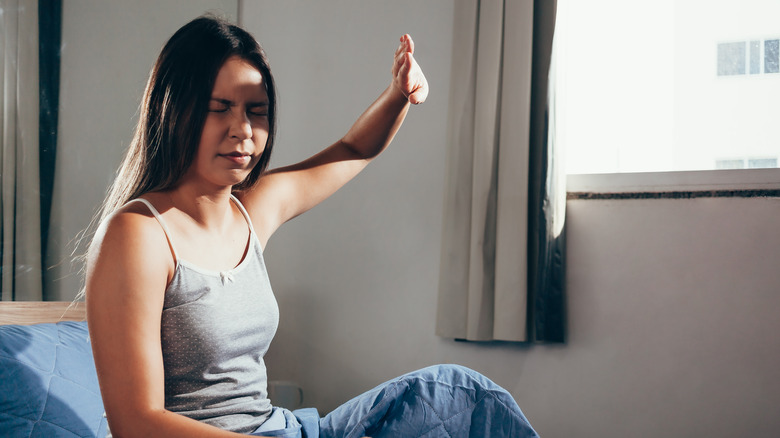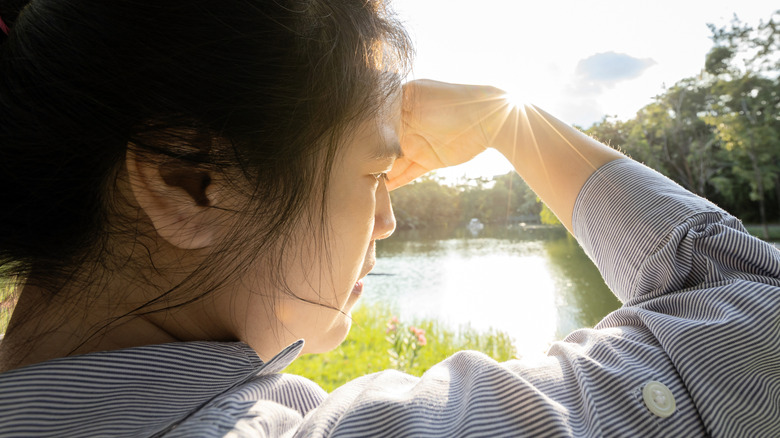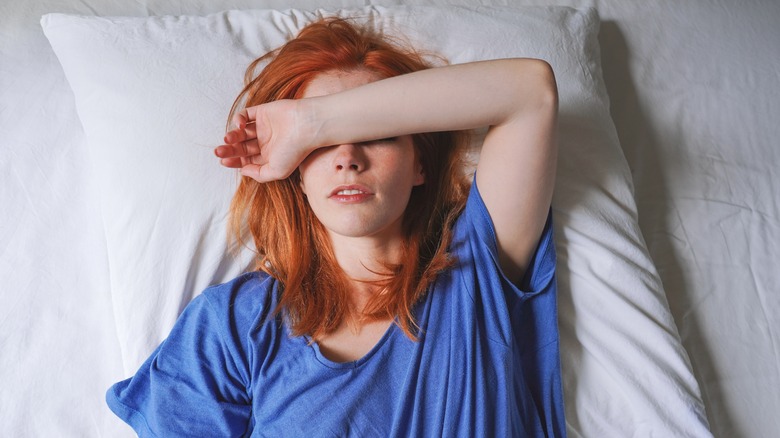Can Light Trigger Migraines?
If you're one of the 39 million people in the United States who suffer from migraines, it can be tough to identify the triggers. Stress is often the culprit behind migraines, but irregular sleep patterns, caffeine, dehydration, and even changes in weather can prompt them, according to the American Migraine Foundation.
A migraine attack can last up to 72 hours, and symptoms such as throbbing pain on one or both sides of the head can sidetrack your daily activities. You might also experience nausea and vomiting. Because migraines make the brain hyperreactive, you can become more sensitive to smells, sounds, and light. That's part of the reason why bright or intense light can either trigger or migraine or exacerbate one. Blue light from phones, televisions, and computer screens can also be uncomfortable for people with a migraine and can trigger an attack. The pulsing of fluorescent lights or flickering of lights while watching a movie can also cause migraines, according to TheraSpecs. However, light sensitivity can be a symptom, trigger, or warning for your migraine.
Light sensitivity can be a symptom of a migraine
As many as 80% of people who suffer from migraines will experience light sensitivity, which is called photophobia. Although the term sounds like it translates into a fear of light, it actually is a word to describe sensitivity to bright light. Photophobia is a symptom of migraine, but it can also accompany dry eyes, cataracts, or swelling within the eye. Some mental health conditions, such as anxiety or depression, can make you more sensitive to light. Photophobia can also be a side effect of some medications. More serious conditions, such as meningitis, brain injury, or pituitary gland tumors, can cause photophobia, per WebMD.
The American Migraine Foundation says photophobia can also occur before a migraine attack or after the migraine has subsided. Some people with migraines might experience photophobia all of the time, or they might just have a lower tolerance for bright lights, according to TheraSpecs.
Is light sensitivity a trigger or warning?
According to The Migraine Trust, a migraine trigger might occur anywhere from six hours to two days before an attack. What might trigger a migraine once may not cause an attack in the future, which is why identifying migraine triggers can be difficult. Sometimes, your body is more sensitive to triggers than others. Additionally, migraine warnings can be confused for a trigger — you can experience sensitivity to your environment, mood changes, or cravings before the migraine. Your light sensitivity could be the warning that an attack is near, and light may not be the trigger at all.
To help identify triggers and warnings for your migraines, keep a diary of your lifestyle and your environment. This diary can include any changes in mood, travel, exercise, diet, sleep, or weather. To see if light triggers your migraine, make note of the different types of lighting in your environment. When a migraine occurs, The Migraine Trust recommends noting any patterns that might appear up to two days before the attack.



